Imagine this: An employee throws in the towel and says his goodbyes to the company. They take the company laptop, and with it goes a set of credentials that are still active, as well as access to many client-sensitive data. All that is left to consider is how to remove or, even better, locate all that hardware, revoke all those access rights, and explain whether and how the data could have been exposed to your IT security team. Sounds familiar?
This kind of chaos happens more often than one could imagine, and it is usually that weird working skill we call ‘preventable’.
Now, in a digital-first workplace, every offboarding is more than just an exit interview or retrieving an ID badge. It is about ensuring that every IT asset, from laptops to licenses, is accounted for and secured, with proper reuse or disposal methods in place. This is where remote work essentials for businesses come in.
Whatever the situation – whether dealing with remote workers, freelancers, or in-house staff – an asset management strategy allows for and duly accounts for data security, recovery of full IT asset value, and adherence to internal or external policies during the employee offboarding process.
Let’s take a closer look at how we can do that step by step.
1. Understanding IT Asset Recovery
IT asset recovery is the retrieval of technology assets, such as laptops, smartphones, and access credentials, for management and disposal when they are no longer needed. For instance, during the employee offboarding process, all the IT resources allocated to an employee in the course of their employment will be properly recognized and reclaimed.
The solid IT asset recovery plan must have goals such as:
- Maximizing the recovery of value in IT assets.
- Safe disposal of IT assets.
- Protecting company data and intellectual property.
- Promoting support of sustainable IT asset recycling.
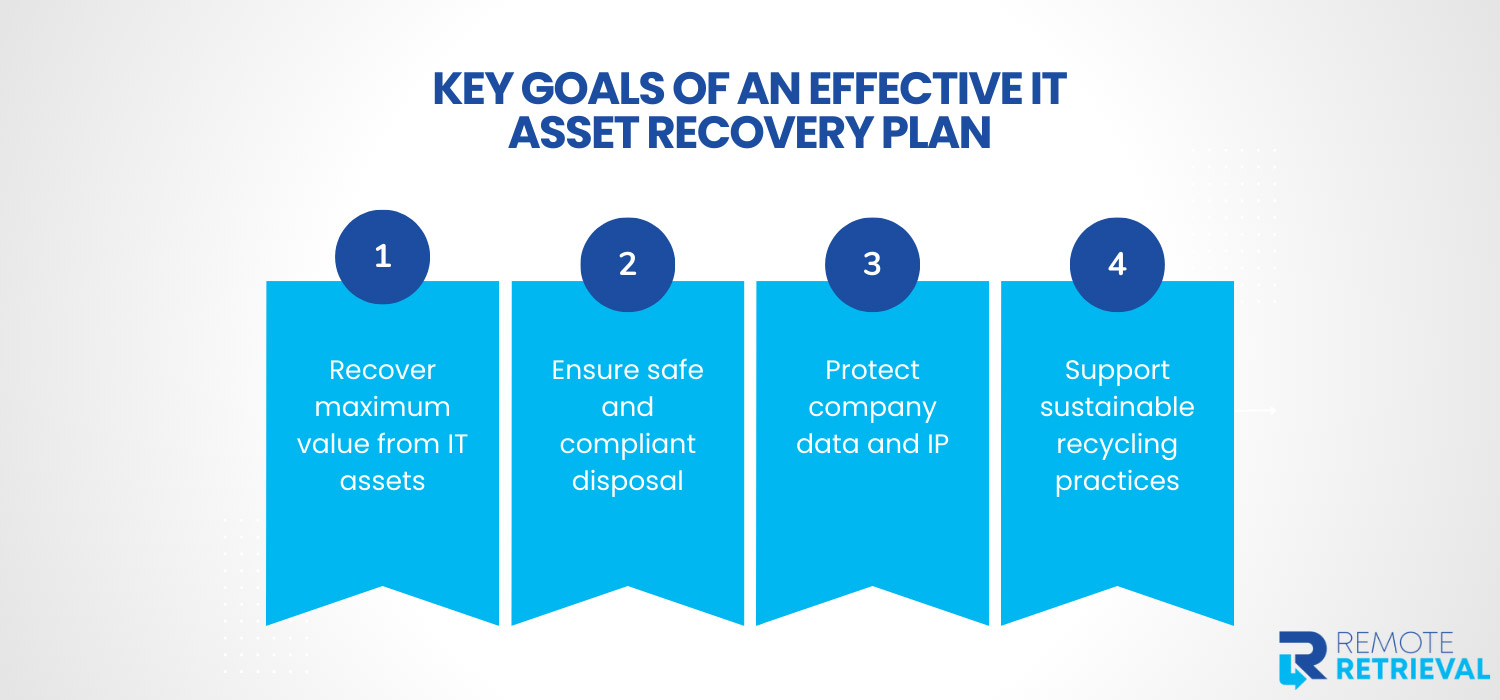
2. Why is a Foolproof Asset Recovery Plan Important?
Companies find themselves at serious risk of data leakage, hardware being misplaced or lost, or the breach of one or more corporate policies when they haven’t clearly defined recovery asset management plans.
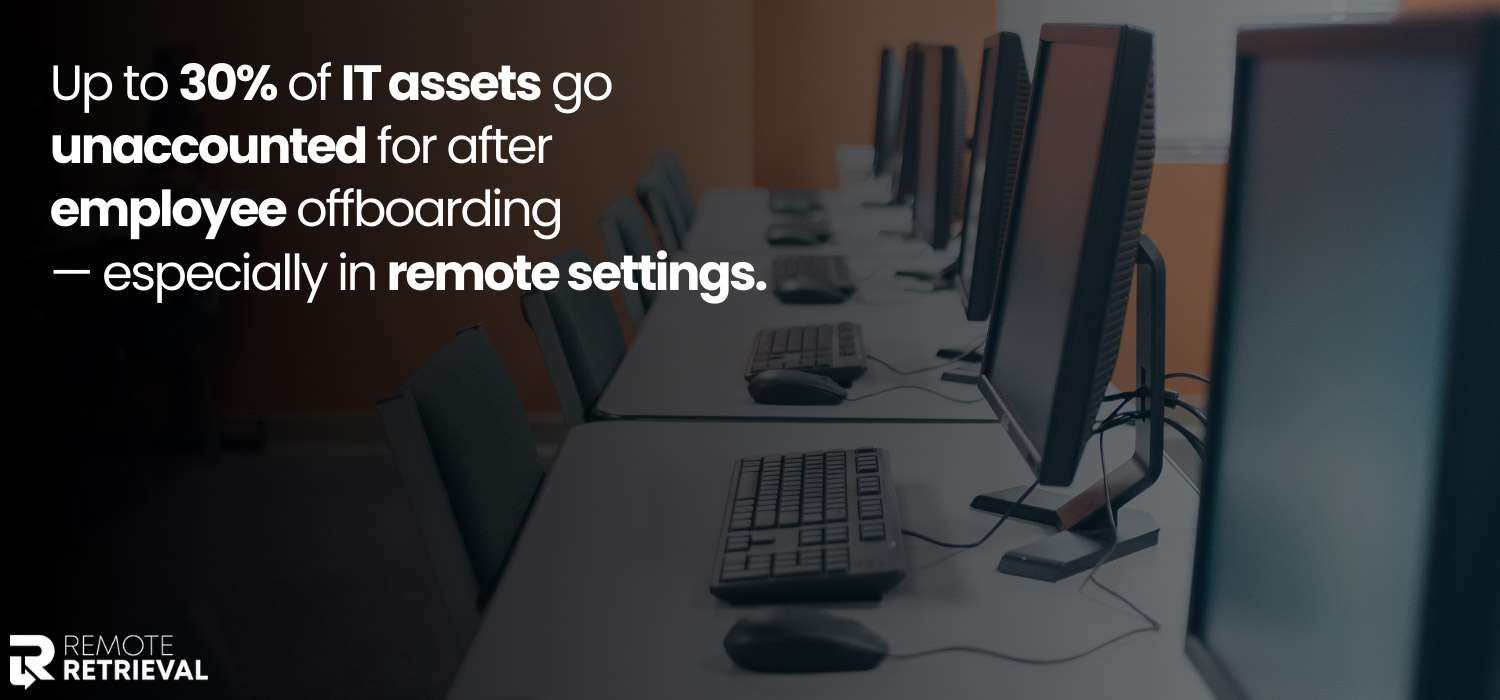
Here are some common real-life problems:
- Employees are leaving without returning the equipment.
- Former employees still have access to cloud-based systems.
- Insufficient IT equipment tracking leading to hardware loss.
All of these problems can easily be turned into financial losses and security threats. However, with the right policies and management, you can easily avoid laptop return pitfalls.
3. The Importance of IT Asset Recovery Plan in Employee Offboarding
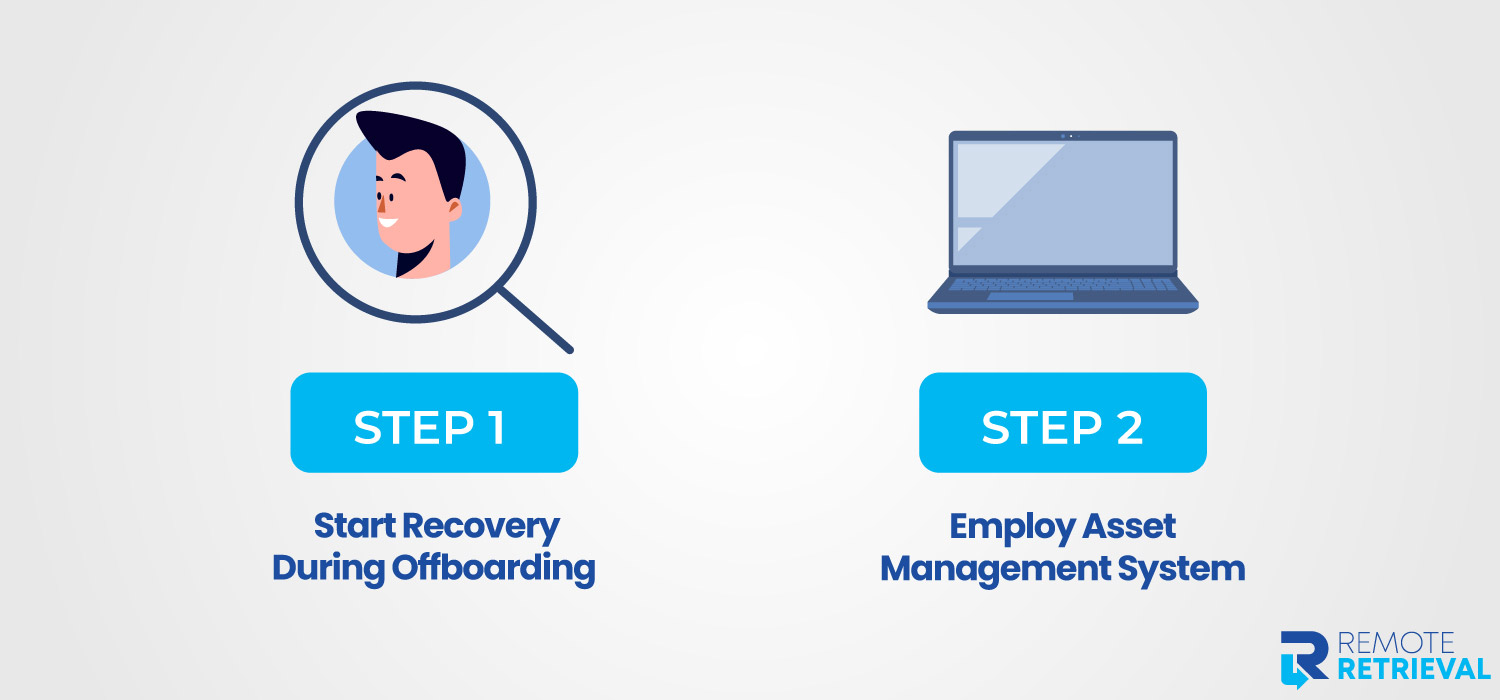
Step 1: Start Recovery During Offboarding
Commence the IT asset recovery both in advance and during the actual offboarding process of an employee. As an employee gives notice or is terminated, inform the IT department as early as possible. This provides enough time for preparing the recovery checklist and initiates deprovisioning jobs.
Step 2: Employ Asset Management System
Adopt a centralized IT asset tracking system to track all assets assigned to employees. An asset management software should include:
- Unique asset IDs
- Assignment history
- Current location and user
- Maintenance and disposal logs
Such tracking of the IT equipment ensures that you are never out of sight of the company’s hardware, nor who is responsible for it.
4. Making An Unfailing Check-list For IT Asset Recovery
Here is an excellent checklist for coordinating the IT asset recovery process:
-
The Identification Of Assigned Assets
All hardware and software assigned to the employee should be identified first.
This includes:
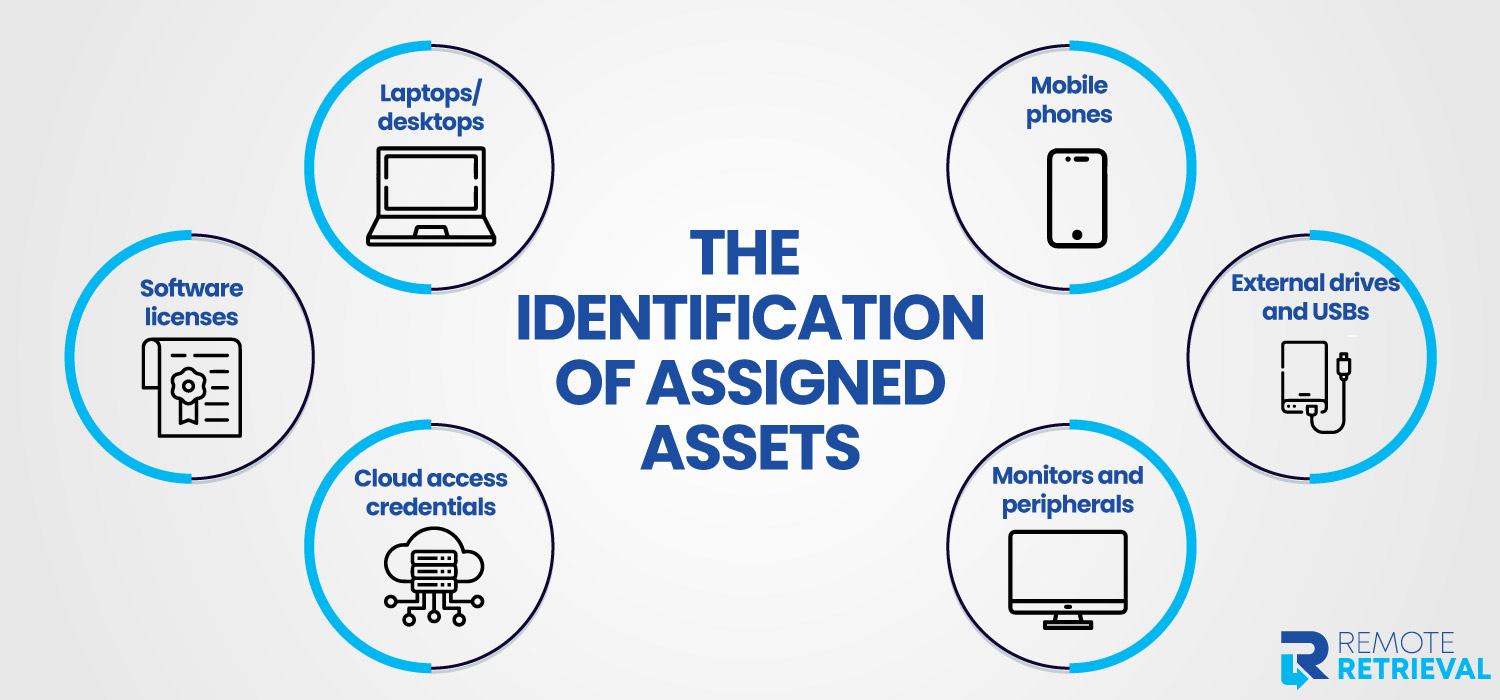
- Laptops/desktops
- Mobile phones
- External drives and USBs
- Monitors and peripherals
- Software licenses
- Cloud access credentials
Use an IT asset tracking tool to create an accurate inventory of your assets.
-
Scheduling Device Return
Schedule a formally agreed-upon return date for all physical assets. For remote employees, coordinate a secure shipping mechanism that includes a prepaid return shipping label.
-
Disable System Access
Ensuring that system administrators:
- Remove or disable all login credentials
- Revoke VPN and cloud access
- Change shared passwords
This is crucial to protect data after the employee’s exit and to avoid unauthorized access.
-
Inspect Devices
Once returned:
- Inspect for physical damage
- Wipe all data securely using industry-standard practices
- Log the status of the device for IT asset value recovery
Data wiping is essential for secure IT asset disposal and for compliance with regulations like GDPR or HIPAA.
5. Technologically Automated Recovery
Modern recovery asset management tools can automate large parts of the IT asset recovery process. Here are some of the functions to look for:
- Automated alerts for the employee departure process
- Integrated IT asset tracking
- Digital signatures to acknowledge receipt of returned assets
- A reporting system and audit trail for compliance purposes
Automation reduces the chance of manual errors and ensures uniformity across various departments.
6. Recovery Audit Trails Must Be Maintained
Every instance of IT asset recovery should be logged with:
- Asset description
- Recovery date
- Employee acknowledgment
- Status of disposal/recycling
This audit trail facilitates internal considerations and external audits, confirming the due diligence of the organization and protecting it against liability claims.
7. Involve Other Departments
The IT asset recovery plan should consider involving other departments in the organization, too:
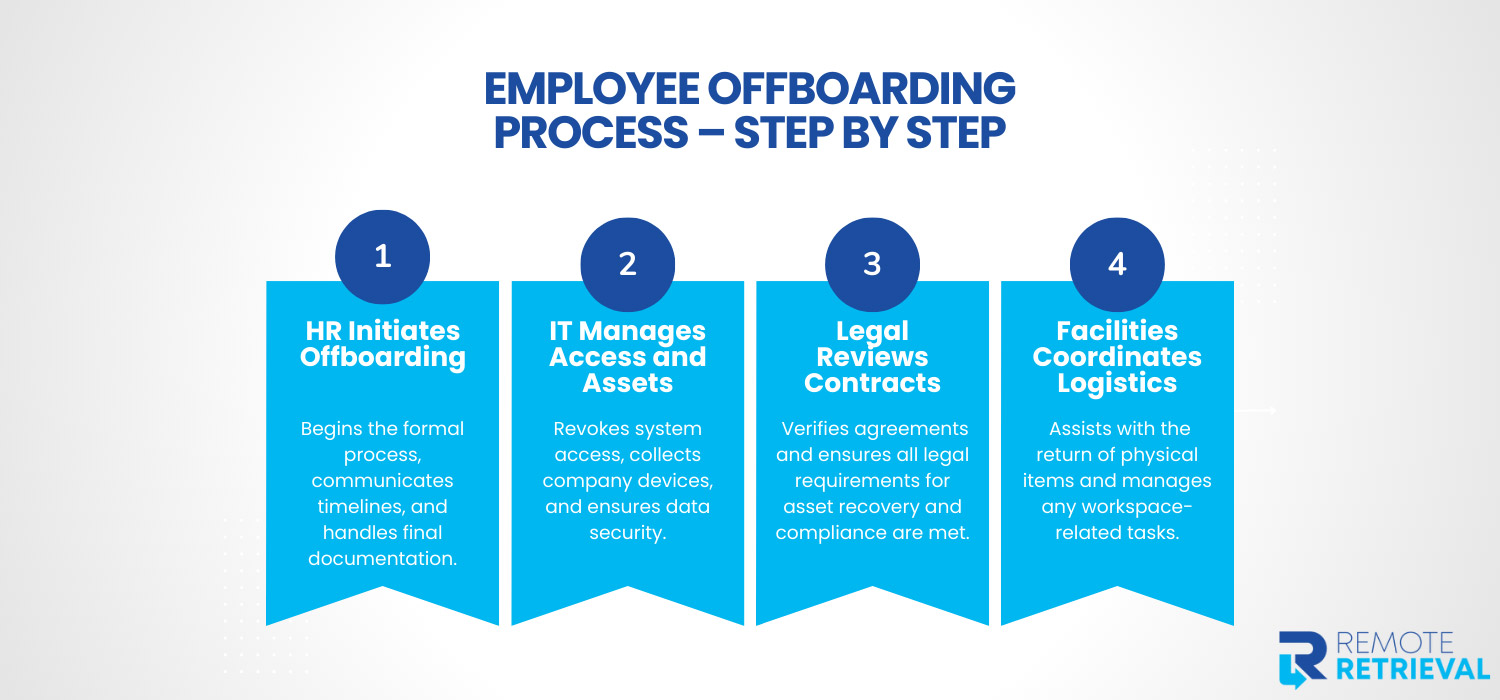
- HR: Starts the offboarding
- IT: Handles assets and access to systems
- Legal: Makes sure contracts are in place for recovery
- Facilities: Helps with logistics and returns
Cross-functional collaboration increases accountability and helps ensure that no step is missed.
8. Employee Education Regarding Asset Responsibilities
These will save some troubles long before they occur by educating staff on the significance of IT asset recovery and the proper utilization of it. There are possible training forms such as:
- Policies regarding asset usage
- Return procedures
- Security protocols
The employees’ understanding of such policies would likely lead to respect and compliance with asset management policies.
Final Words
Today, any digital workplace needs a very effective IT asset recovery strategy. It is not just about recovering devices. It is also about data protection, cost recovery, compliance, and sustainable business practices from IT asset recycling and secure IT asset disposal. Also, to safely navigate the laptop return process for employers.
By integrating a structured process into your employee off-boarding process and using IT equipment tracking and recovery asset management tools, your organization can minimize risks while maximizing its value returns from investments in IT.
